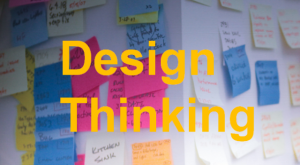Contributed by Kaan Turnali, SAP
“Customer-centric design is about looking out from the inside—rather than outside in”
Today’s organizations face multifaceted problems that are part of increasingly complex business models. Continued expansion of global transactions, supported by partnerships that can span large ecosystems, create unique opportunities and unique challenges for businesses.
These challenges demand multidimensional solutions and require more than just basic applications of current products and services. This is where design thinking comes into play. By applying this framework, organizations can not only address everyday business problems and challenges but also gain a competitive edge.
To stay relevant, companies must innovate without disruption to drive growth and profitability. As Tim Brown, CEO of the design and innovation firm IDEO, puts it in a Forbes.com interview, “Design thinking is all about upgrading within constraints.”
What Is Design Thinking
In its simplest form, design thinking is a process—applicable to all walks of life—of creating new and innovative ideas and solving problems. It is not limited to a specific industry or area of expertise.
It can be as effective in technology or education as it may be in services or manufacturing. It could result in new products and services for customers or improved processes and productivity gains for internal operations. If applied with equal fervor, it can even transform HR, finance, marketing, or operations teams—turning them into lean and agile profit centers.
The award-winning documentary Design & Thinking explores this idea and provides perspectives by well-known subject-matter experts in this space. The Hasso-Plattner-Institute (HPI) at the University of Potsdam School of Design Thinking, in Germany and the Hasso-Plattner-Institute of Design at Stanford University in California are the two leading educational institutions in this field.
Developed by IDEO founder David Kelley, design thinking is defined as “a human-centered approach to innovation that draws from the designer’s toolkit to integrate the needs of people, the possibilities of technology, and the requirements for business success.” Thus, the method focuses on three main elements of a product or solution: people, technology, and business. All of these aspects evolve around the customer.
The customer drives the current and future state of any business. Products and services, whether they are delivered to internal or external customers, must create intrinsic value and address specific business needs. This cannot be done unless the customer is an integral part of the entire product lifecycle—not an afterthought.
It is accepted that businesses, projects, or teams that lack customer focus are bound to fail. Design thinking makes the customer the main focal point of design for any solution. Plus, it consistently applies the values embraced by this approach, such as empathy, diversity, and ambiguity, as well as recognizing the importance of multidisciplinary teams. Many of these principles reflect ideas that stem from well-known principles and/or best practices. However, design thinking, in essence, incorporates them into a coherent and repeatable process.
Here are my interpretations of some of these principles. You can find others listed here.
- Success comes from designing integrated solutions in which each part completes the system in whole—not designing fragmented pieces that make up a stack.
- By getting closer to current or potential users and going beyond distant observation, we have a chance to design by looking out from the inside—rather than outside in.
- Empathy opens up nerve endings so we can feel what it is like to be in another’s shoes—a prerequisite for customer-centric design. We need to get as frustrated as the users/customers so we can better understand the pain points.
- By bringing multidisciplinary teams together at the table, we leverage the power of collective expertise.
- Embracing ambiguity opens the door for human ingenuity—allowing us to chase opportunities for new ideas we would otherwise miss.
- Promoting the philosophy of “fail early and often” is the key to harnessing the power of rapid prototypes and delivering proof of concepts that resonate and encourage feedback from actual users and customers.
This last one is the closest to my heart because it often reminds me of two famous quotes (available in several variations on the Web). First, there is Edison’s quote about failure and inventing the light bulb: “I have not failed, not once. I’ve discovered ten thousand ways that don’t work.” Then there is Frank Lloyd Wright’s insight “You can use an eraser on the drafting table or a sledgehammer on the construction site.”
To me, design thinking is a framework for ingenuity. It can generate excitement for new ideas, leading to solutions that address unmet needs. Just as business intelligence can be the enabler for faster, better-informed decisions, design thinking can be the driver for better-designed solutions for products and services.
I always argue that passion is the fire that ignites engagement by inspiring what is possible. In the context of business and technology, ideas create the demand for technology that can translate into solutions that drive growth and profitability.
Connect with me on Twitter (@KaanTurnali), LinkedIn and turnali.com



Leave A Comment